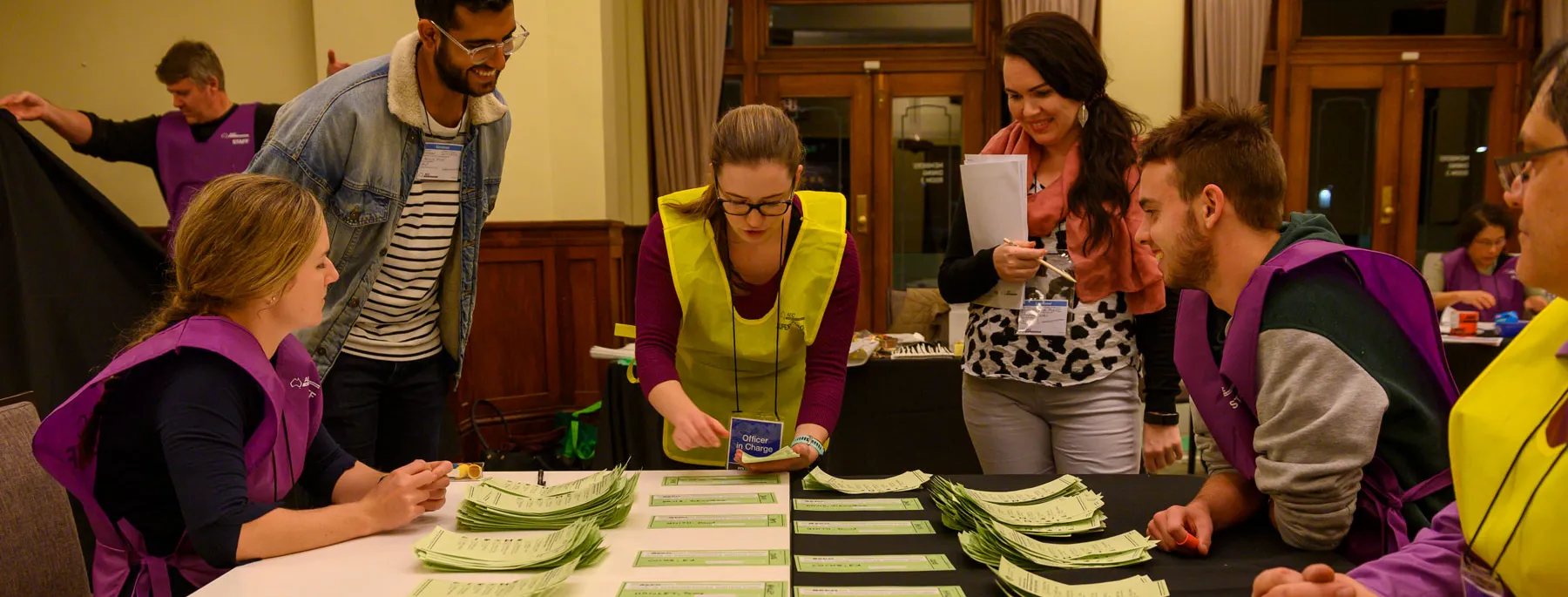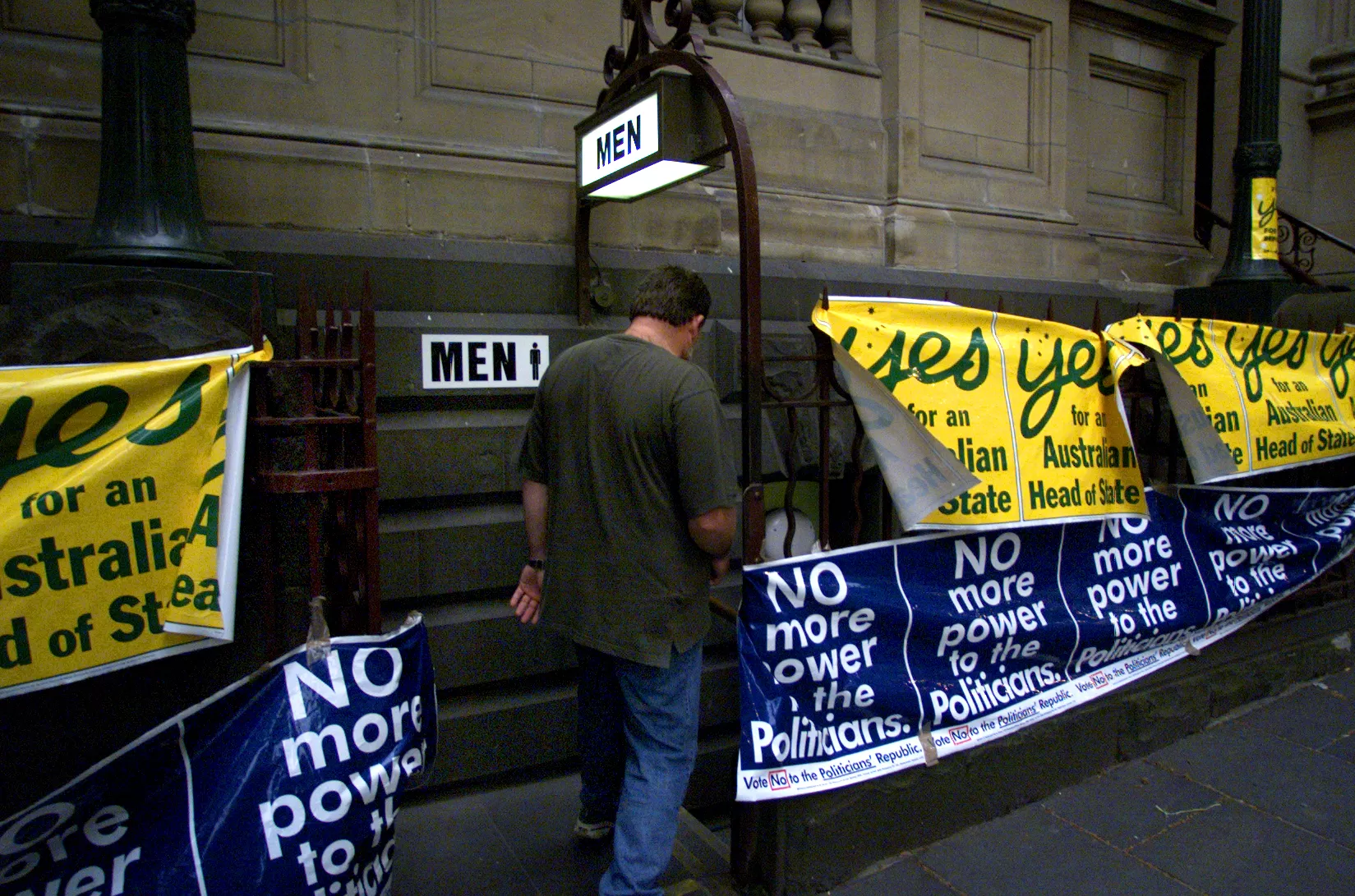How are votes counted?
The vote tallying process in Australian federal elections explained.
On federal election polling day, which is always a Saturday in Australia, voters cast their vote by marking their preferences for candidates on ballot papers. Elections are conducted by the Australian Electoral Commission (AEC) and may also be observed by candidate- and party-appointed scrutineers. After voting, voters can enjoy a democracy sausage.
If a voter is unable to vote at a polling place on polling day, there are other options, including voting at an early voting centre, postal voting, voting at an overseas voting centre, and voting at a mobile polling booth.

People voting at Old Parliament House in the 2022 federal election, supervised by Australian Electoral Commission (AEC) staff. Photograph courtesy of the Australian Electoral Commission
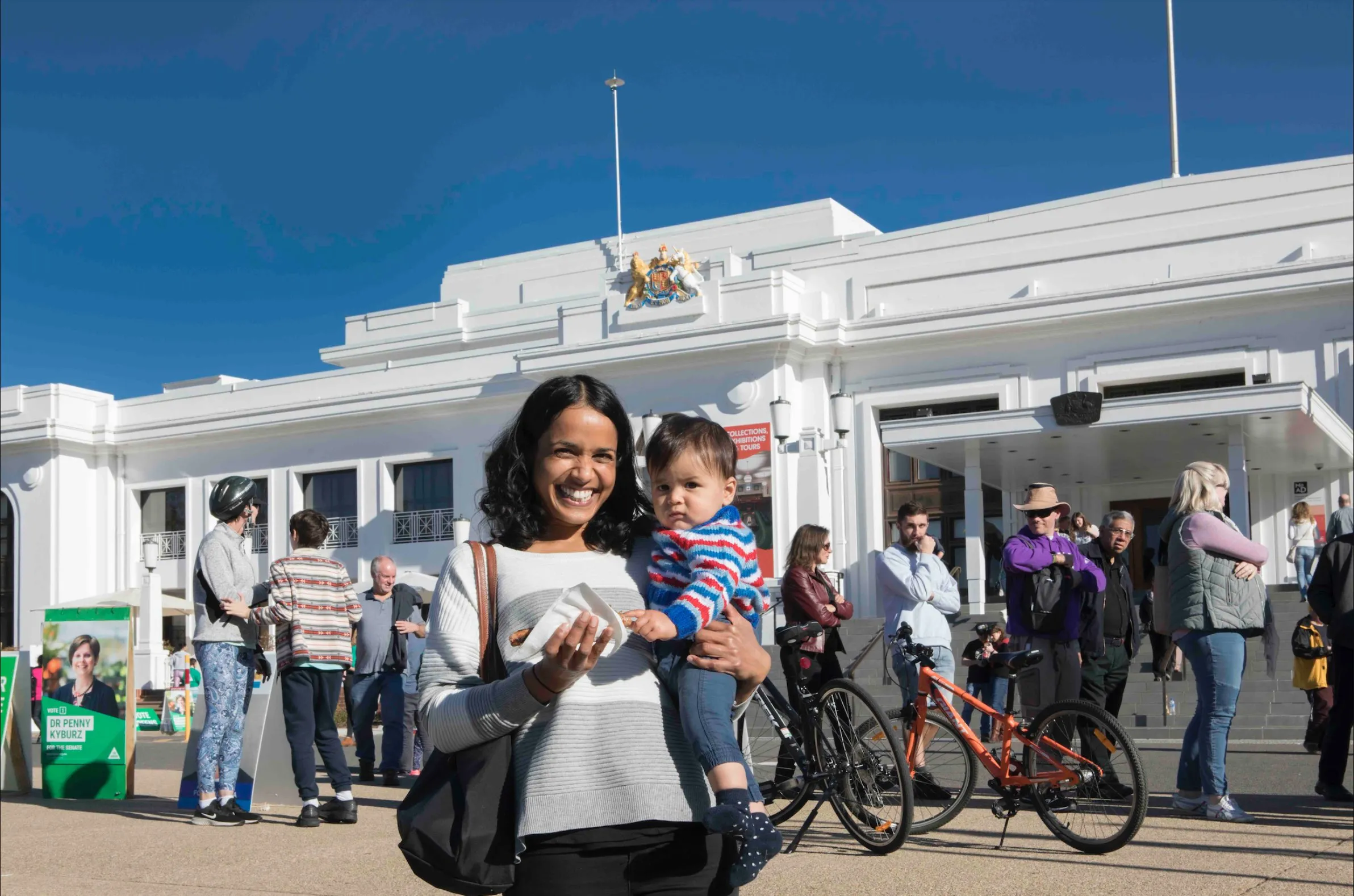
A post-vote democracy sausage outside Old Parliament House on polling day for the 2019 federal election.
How are election votes counted?
Once polls close at 6pm, the count begins. Votes cast at each polling place are counted at that polling place that night by AEC polling officials and staff. This is watched by scrutineers to make sure the count is conducted in accordance with the law.
If the election is to elect representatives to both the House of Representatives and the Senate, the House of Representatives ballot papers are counted first. Polling officials open and empty the House of Representatives ballot boxes, then sort them into piles of formal and informal ballot papers. Ballot papers not completed correctly are considered 'informal votes' and are set aside. Formal ballot papers are then sorted by '1' votes (first preference) for each candidate. The '1' votes for each candidate are counted and the results telephoned through to the AEC's Divisional Returning Officer (DRO), who enters these into the AEC's tally system. These results are then sent to the AEC's 'Virtual Tally Room'.
After this initial count, polling officials conduct a two-candidate preferred count. This count is done to indicate who is most likely to be elected to each seat. These results are telephoned through to the DRO for input into the AEC's tally system.
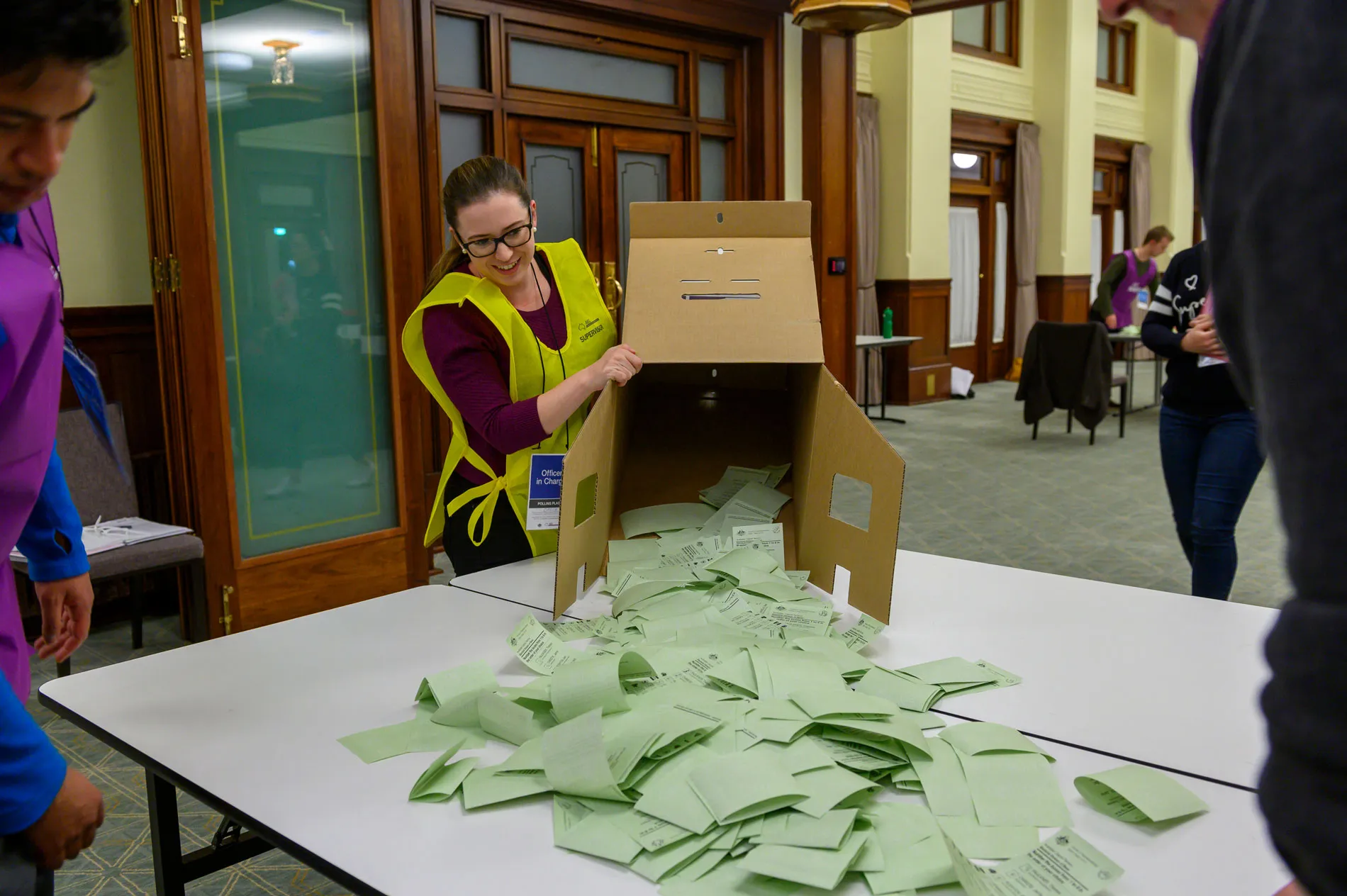
Emptying the House of Representatives ballot box at Old Parliament House for the 2019 federal election.
Photograph courtesy of the Australian Electoral Commission
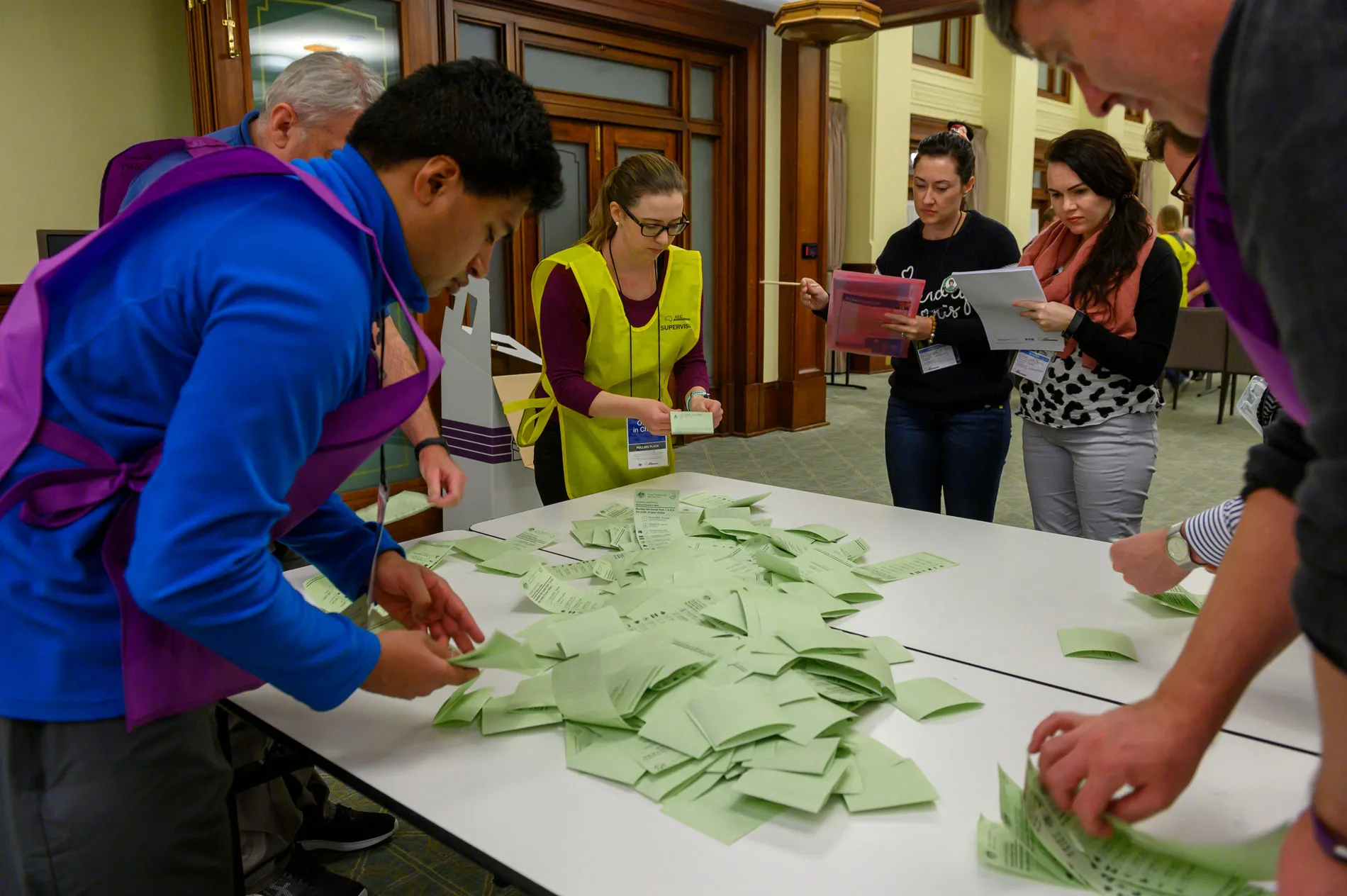
Sorting the House of Representative votes at Old Parliament house for the 2019 federal election.
Photograph courtesy of the Australian Electoral Commission
Once the House of Representatives count is complete, the Senate ballot boxes are opened, emptied and papers are sorted into '1' votes (first preference) for each party/group, regardless if the '1' vote is above the line in a group's box, or below the line in a candidate's box. These '1' votes are counted and the result is telephoned to the DRO.
The Senate ballot papers are then sent to the AEC for further scrutiny, including by computer and manual data entry to populate any preferences that were unable to be read by the computer. AEC counting software is used to determine the results. The Senate vote counting process is complex and the results can take weeks to finalise.
A significant number of votes cast at early voting centres are also counted on election night. These are counted at AEC counting centres.
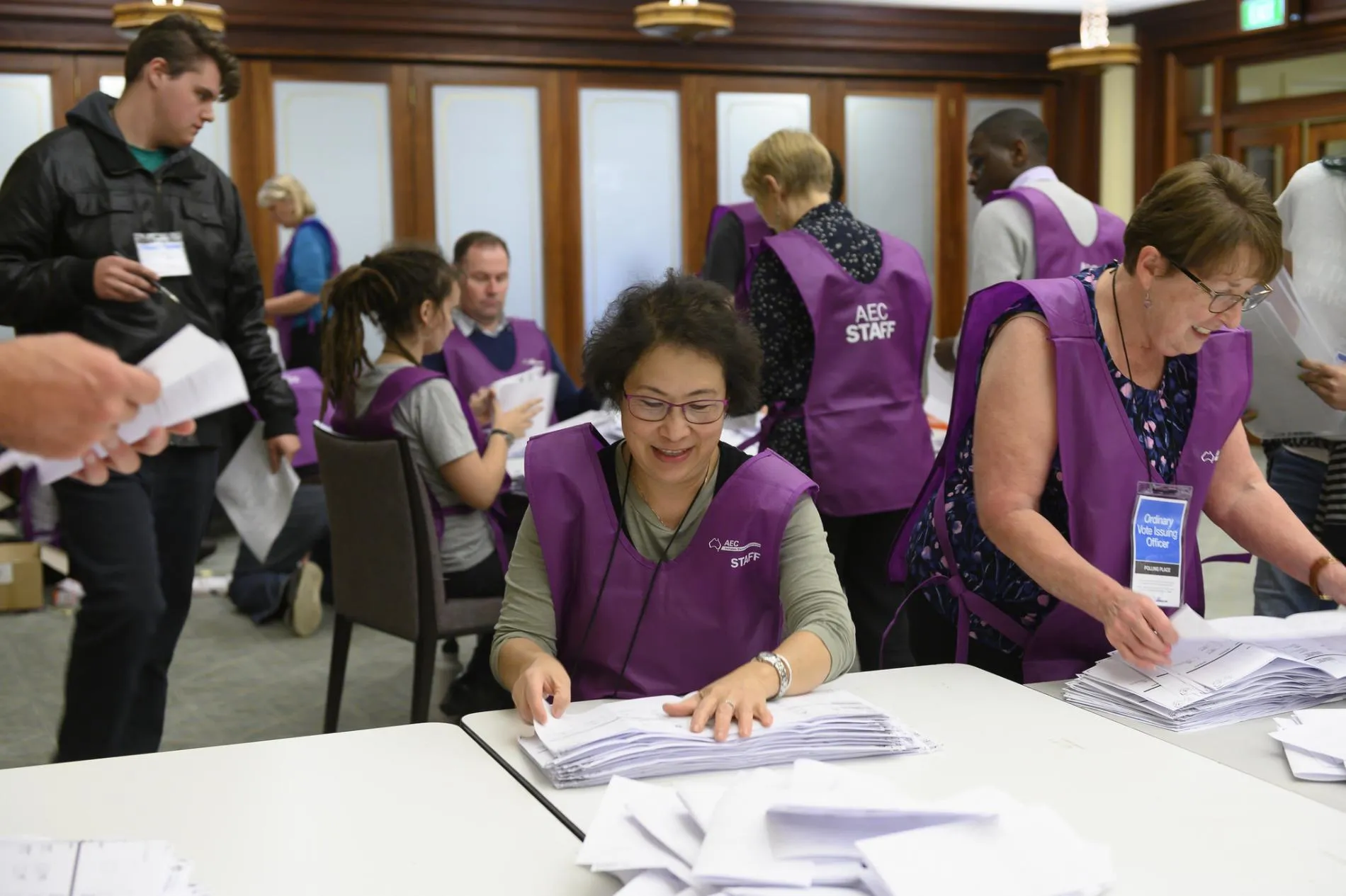

Image one: Counting Senate ballot papers at Old Parliament House for the 2019 federal election.
Photograph courtesy of the Australian Electoral Commission
Image two: Unlocking a ballot box to count the votes in the Sydney Tally Room in the 1954 federal election.
Photograph by W Brindle, NAA: A1200, L17072
Election night coverage
All election results are published on the AEC's Virtual Tally Room in real time and can be viewed by anyone, including candidates and parties, media, voters and people keen on seeing the results as they happen. The AEC also delivers real-time results to media, and anyone else who's interested, during elections via their media feed.
In the past, there was a National Tally Room, which was set up in various locations around Canberra, including Belconnen High School and eventually at its final home in Exhibition Park. Live results were physically added to a giant board and journalists broadcast live from the room. The Tally Room also hosted politicians and the public. From 2013, the National Tally Room ceased to exist, and parts of the board, complete with some of the 2010 election results, are now in MoAD's collection.
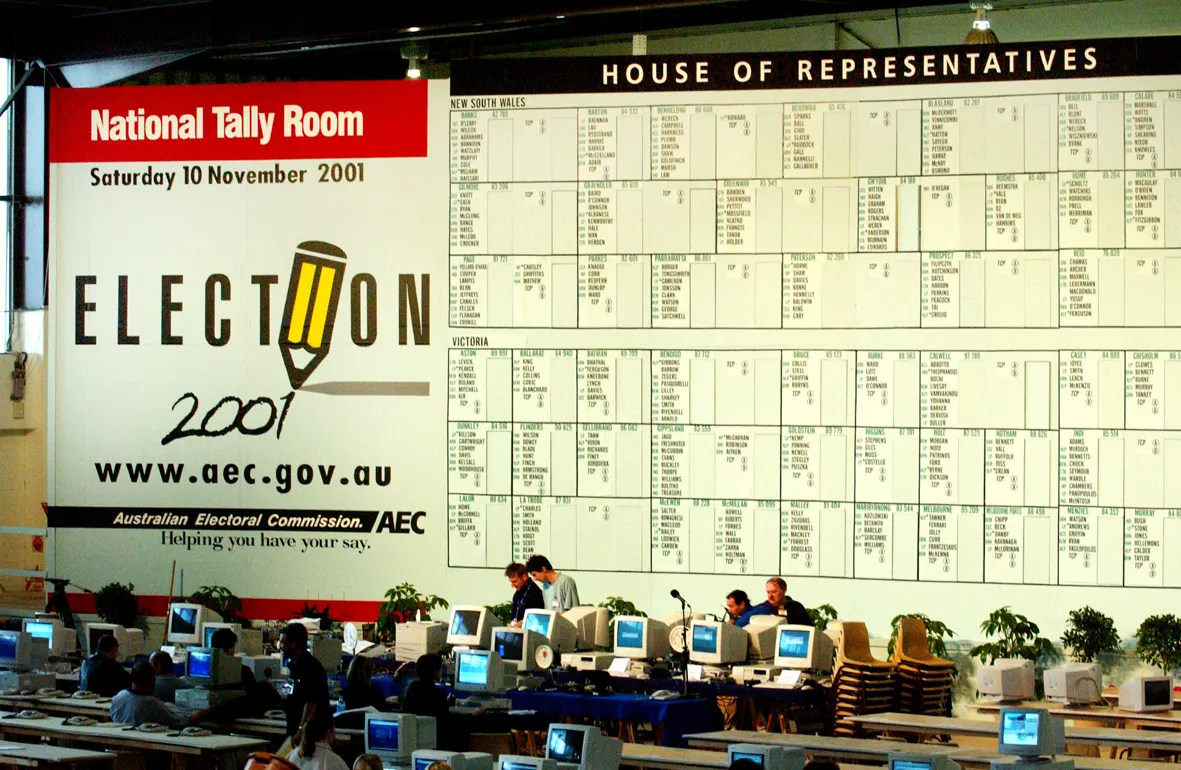
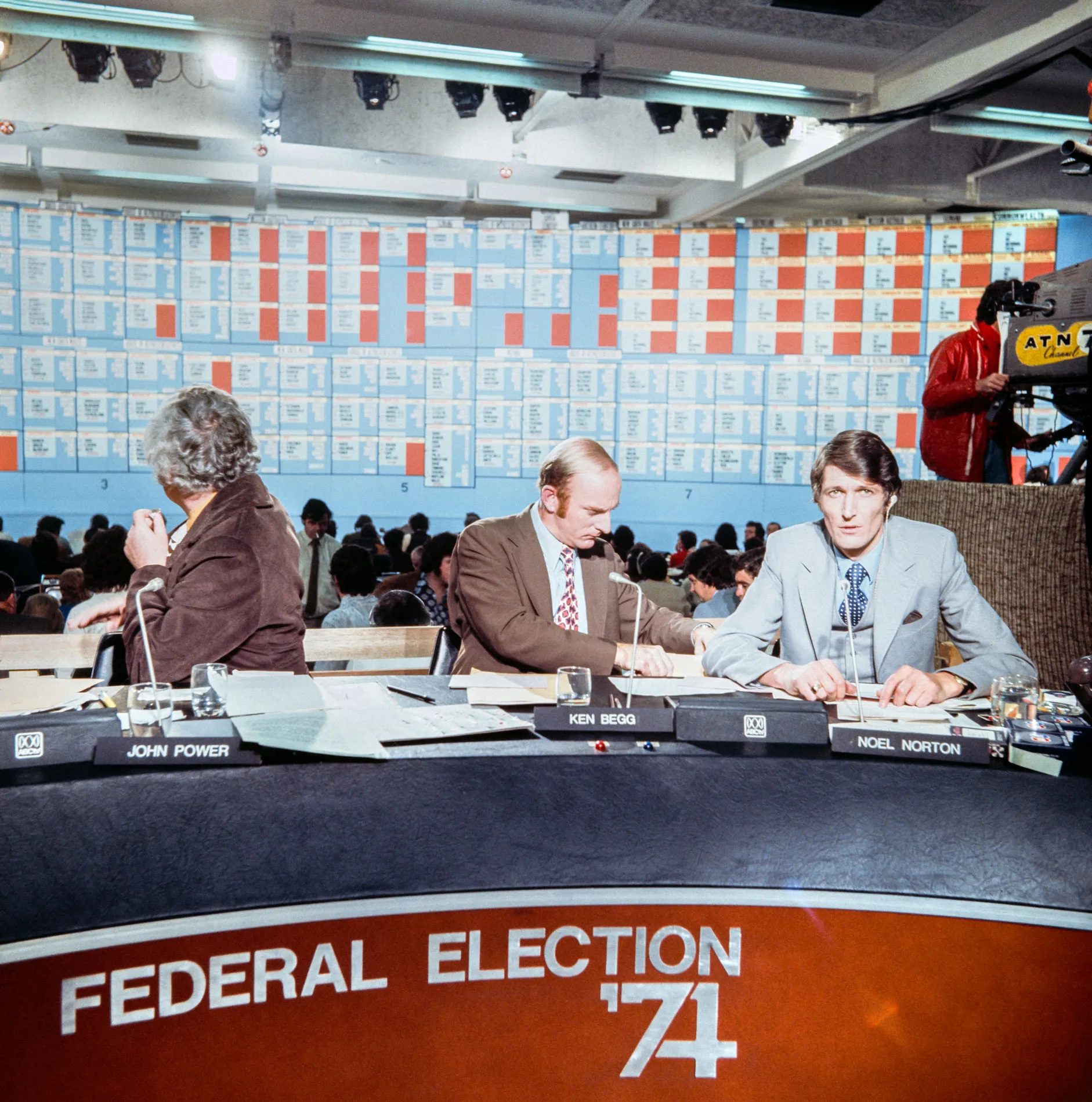
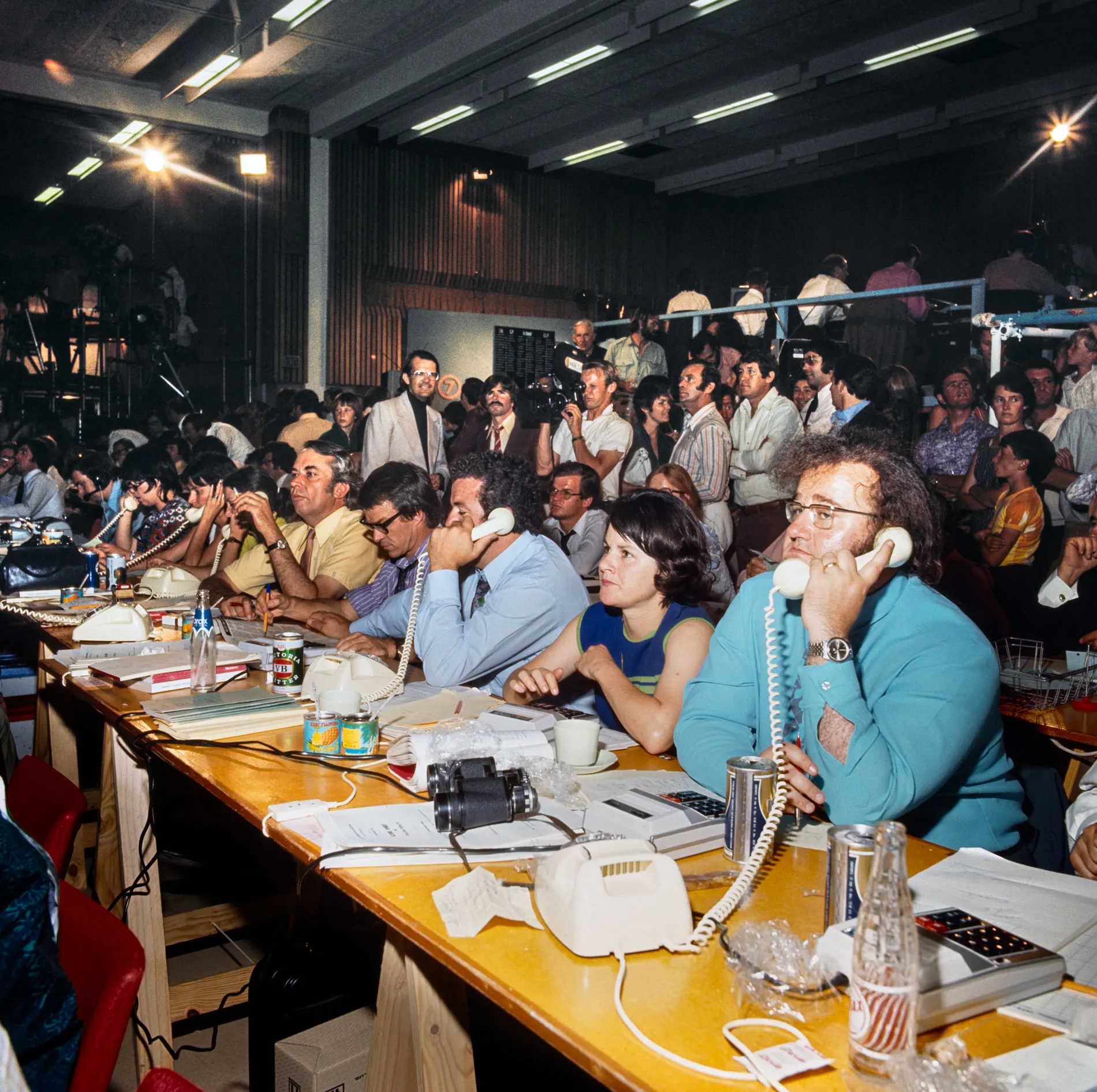
Image one: 2001 federal election National Tally Room in Canberra, Saturday 10 November 2001.
Photograph courtesy of the Australian Electoral Commission
Image two: 1972 federal election Tally Room in Canberra, December 1972.
Photograph NAA: A6135, K5/12/72/9
Image three: 1974 federal election National Tally Room at Belconnen High School in Canberra, May 1974.
Photograph NAA: A6135, K21/5/74/29
While the National Tally Room is no longer a physical place for media to broadcast and crowds to gather to see the election results as they happen, election parties are still held around the country to follow election coverage whether on traditional media or social media.
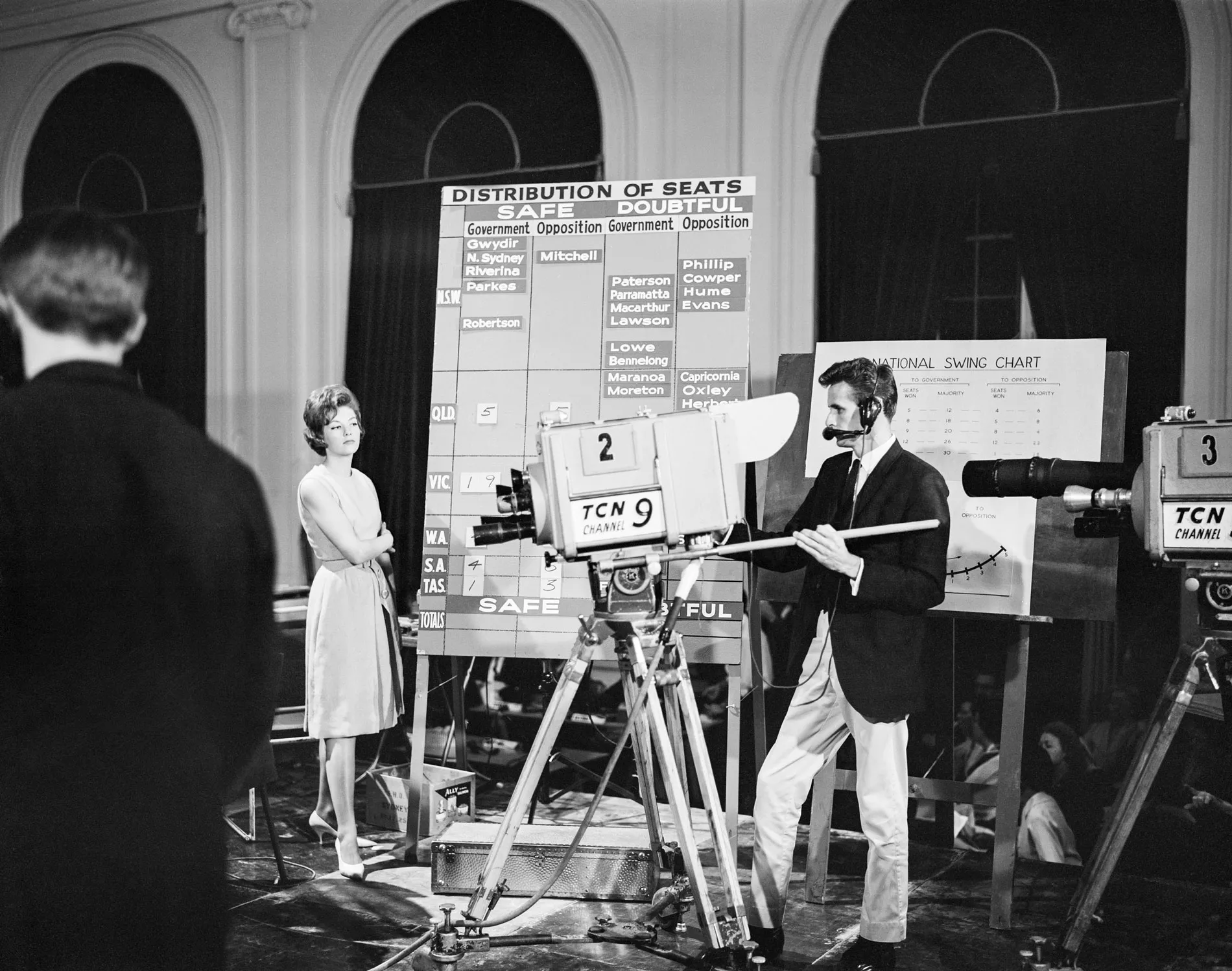
Television coverage of the 1963 federal election at the Tally Room in Albert Hall, Canberra.
Photograph by W Pedersen, NAA: A1200, L45923
When do we find out the election results?
The party who will form government is usually known by mid-evening on election night. However, individual seats in the House of Representatives can take a week or more to finalise. Senate counting can take even longer.
To be elected to a seat in the House of Representatives, a candidate must gain more than 50% of the votes in the count, an 'absolute majority'. Even if all the ballot papers haven't been received, the AEC may declare the results if they're satisfied that those votes won't affect the outcome.
To be elected to the Senate, a candidate needs to win a 'quota' (a set proportion) of the electorate's votes. So, on election night, we'll only have an indication of the results for the Senate seats. The final results can take weeks.
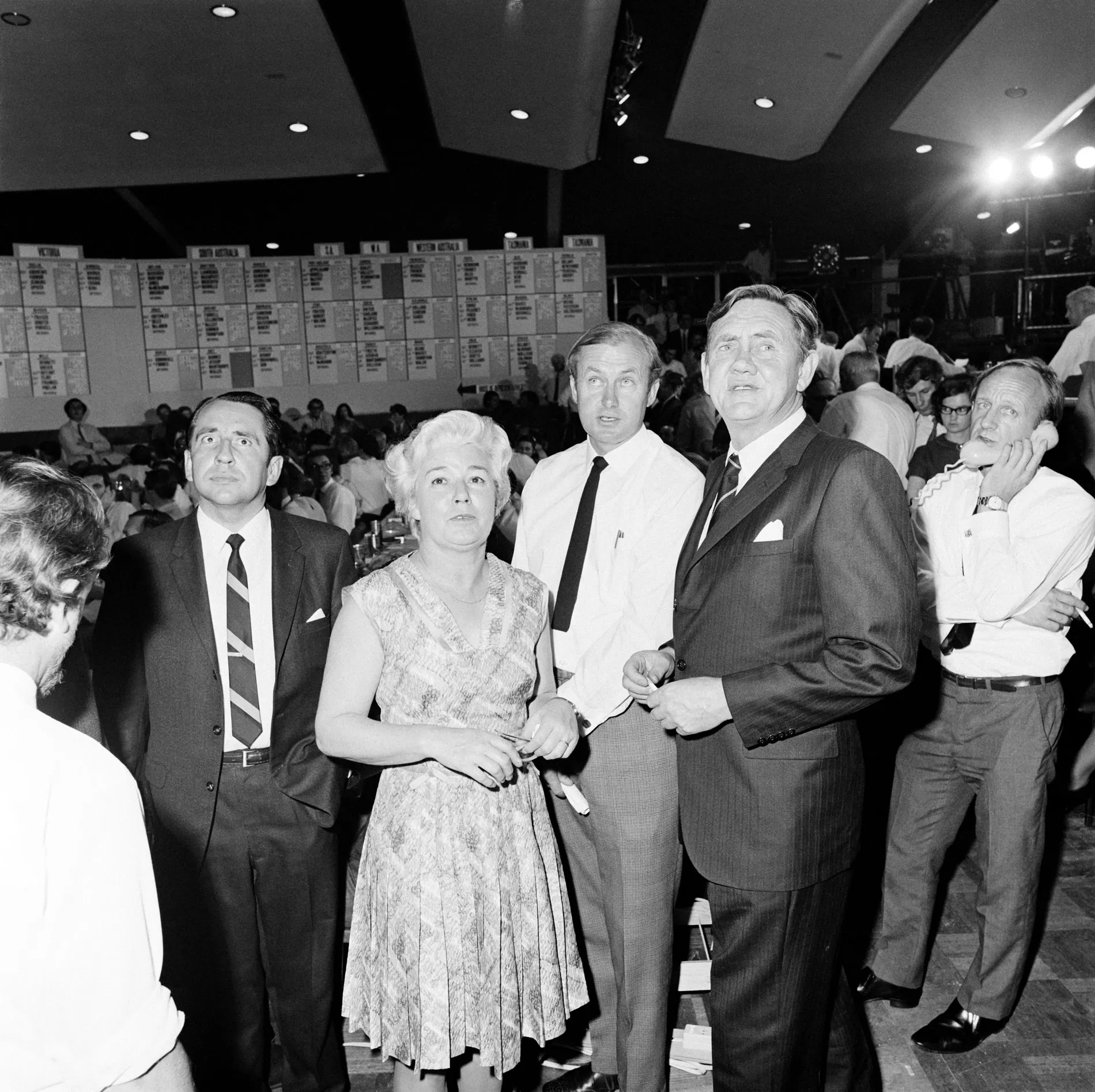
John Gorton at the National Tally Room during the 1969 federal election night. Gorton was the incumbent prime minister and retained the prime ministership in the election.
Photograph Australian News and Information Bureau, NAA: A1200, L84313
What are scrutineers?
Scrutineers are appointed by candidates and/or parties to observe the poll (voting and counting) and ensure all poll processes are conducted in accordance with the law. They may be appointed by candidates to represent them at polling places, early voting centres and where votes are being counted.




